Every day, millions of people board airplanes in shorts or short skirts and open-toes sandals without a second thought. This is no wonder as the airline industry uses chance of accident per mile traveled statics of large commercial aircraft to convince them that airplanes are surrounded by magical safety bubbles.
“The risk is so low that there is no sense concerning yourself with it.”, they say.
To effectively assess risk, one must consider the total risk, not just “accidents” per mile traveled of large commercial aircraft. What happens if we add in private planes? How about small planes?
We must also consider the exposure to risk. While the risk may be low, the exposure is severe. In fact, the total risk is significant enough that planes are required to carry approved survival kits to fly over water, in Alaska and Canada.
Survival kits are needed because rescuing survivors from remote areas requires time, planning and the cooperation of the weather. Without survival kits, people would not survive until rescue, especially in mountainous terrain.
I remember flying over the arctic circle for the first time as a child, looking down at the mountains, tundra and icebergs on that flight and thinking that it must be a whole lot more comfortable up there in the plane than down on the ground. I knew that if anything went wrong, that is where we would end up.
There are many ways to wind up on high on a mountain. And here’s how to survive if you find yourself in a situation like this. Briefly:
- Exposure is the leading cause of wilderness survival-related death, so dress based on the coldest nighttime temperature instead of the daytime temperature.
- Carry critical survival gear in your pockets, not in your pack, which is very likely to be separated from you when you need it most.
- By the time water boils, it is safe, even on the highest mountains in the world where you could not even survive without bottled oxygen.
- Altitude sickness can be deadly. If you ascend past 8,000’ descend below 4,000’ as soon as possible at the first sign of a headache and any other additional symptom of altitude sickness unless you have a doctor with you and he or she tell you different.
- Despite advances in avalanche safety technology, avoidance is still your best and safest option.
Mountain Survival by Ecosystem
Viewed from space, the Earth’s atmosphere is surprisingly thin. At high altitudes, little atmosphere exists to lessen exposure to UV radiation and oxygen concentrations are lower. The greenhouse effect is also lessened, so the higher you go up a mountain, the colder it gets.
There is also more wind at higher altitudes, so as you climb, forest density gradually decreases until trees cannot grow at all. This line on a mountain is known as the tree line.
This is important to survival as survival becomes more difficult without trees and the biodiversity that they support. There are far fewer resources available for survival above the tree line.
Alpine: Tundra and Grasslands
Alpine is the ecosystem of a mountain above the tree line. There are fewer plant species in this zone, with tundra, grasslands or shrublands. Plants are mostly lichens, moss, cushion plants and grasses.
Subalpine: Below the Tree Line
Just below the tree line, continual exposure to icy winds means that trees able to grow here are scattered and growth is stunted, deformed and gnarly. The term used to describe this characteristic tree growth is Krummholz, which means, “twisted, crooked or bent.”
Descending the mountain, decreased wind enables trees to grow straighter, taller an in sparse stands as the forest line is approached. For the survivor, descending to the lower subalpine typically means encountering firewood and some degree of shelter from exposure.
Montane & Submontane: Forests, Meadows and Rivers
The forest line or timberline is where the sparse stands of trees thicken into forest or dense stands. These are the highland forests, typically coniferous or mixed. Survivors able to descend to this point, typically find better shelter from the wind, UV light, abundant firewood and more abundant resources of all kinds.
Mountain Survival Dangers & Difficulties
The historical record is replete with stories of guerillas fleeing into the mountains to survive because mountain life is both dangerous and difficult.
Cold
Cold exposure is the leading cause of death in mountain survival. The higher you go, the colder it gets. Find a mountain high enough and you will encounter snow even if the mountain is on the equator. With a summit of 20.703’, Chimborazo, in Ecuador, has snow year-round, and Mount Kilimanjaro and the Andes have glaciers.
3 Second SEAL Test Will Tell You If You’ll Survive A SHTF Situation
Even in the lower 48, Wyoming, Colorado, California, Nevada, Utah, Washington, New Mexico, Montana, Idaho and Arizona all have mountains over 12,000’. At high altitudes like this, mountains can be extremely cold at any time of year. Mountains can also make their own weather. Where I live in the Rockies, it snowed on the 4th of July one year.
Every year, people die from exposure in the mountains. Most of them travel up from lower altitudes and underestimate the overnight low temperature.
High Winds
High winds produce wind chill, making it feel colder than indicated by the temperature. Wind chaps skin and drives ice crystals and precipitation causing wind burn and chapped lips. It can also drive rain and snow up under shelter and make it difficult to start fires.
Solar Radiation
At high altitude, less atmosphere means more intense UV radiation which causes sun burns much faster than at sea level. Snow also reflects sunlight, causing snow blindness.
Avalanches
Avalanches are snow slides and typically occur on or below slope of 30-45 degrees. Avalanches can be very powerful and can bury survivors before they have time to react. If entombed in enough snow and ice, escape is often impossible without air pockets because the body is immobilized by the weight of ice and snow. Survivors are often disoriented, do not know which way is up and cannot see.
Scarcity of Resources
Alpine and subalpine zones often lack resources encountered at lower altitude, further complicating survival. Without shelter from exposure and fuel to keep a fire going, it becomes even more difficult to keep hypothermia at bay.
Altitude Sickness
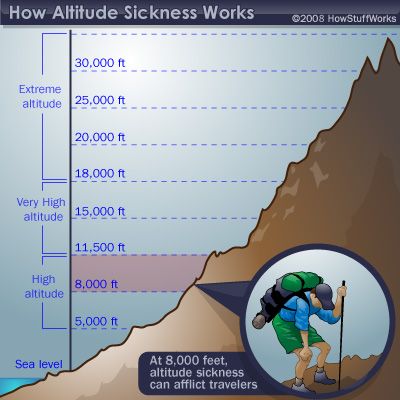
Young people are at greater risk. People who live at or near sea level may experience feelings of breathlessness at altitudes as low as 5,000’.
Acute attitude sickness can occur as low as 6,600’ at a pressure of around 0.79 atmosphere (80 kilopascals) in otherwise healthy patients, so take a ski trip in the Rockies and attitude sickness is a possibility.
While most people can ascend to 8,000’ without symptoms, susceptibility varies. Over 8,000’ attitude sickness is a risk.
Onset of symptoms typically occurs six to ten hours after ascent. For most, symptoms improve within two days, but some the condition is more serious.
There are three flavors of altitude sickness with the last two sometimes being life threatening:
- Acute Mountain Sickness (AMS)
- High Altitude Pulmonary Edema (HAPE)
- High Altitude Cerebral Edema (HACE)
Acute Mountain Sickness (AMS)
AMS is the most common and mildest form of altitude sickness. Symptoms of AMS are a headache at an altitude above 7,900’ with a pressure below 0.75 atmosphere and one or more the following “hangover-like” symptoms:
- Nausea
- Weakness, fatigue, dizziness, lightheadedness, insomnia
- Swelling of hands, feet and face
- Muscle Aches
- Persistent rapid pulse
- Pins & needles sensation
- General Malaise
High Altitude Pulmonary Edema (HAPE)
HAPE is a buildup of fluid in the lungs and is very dangerous and can be life threatening.
- Bronchitis-like symptoms (coughing up pink, frothy spittle or mucous, wheezing, shortness of breath, chest discomfort)
- Persistent dry cough
- Blue or Gray Skin
- Difficulty breathing
- Bubbly-sounding breathing, gasping or wheezing
- Excessive sweating, dizziness, lightheadedness, weakness can be signs of drop in blood pressure
High Altitude Cerebral Edema (HACE)
HACE is the most dangerous form of altitude sickness and involves buildup of fluid in the brain. HACE is life threatening.
- Headache
- Dizziness
- Nausea
- Vomiting
- Fatigue
- Shortness of Breath
- Insomnia
- Diminished Appetite
- Confusion
- Coma
Mountain Survival Techniques & Tips
Dress for the Coldest Nighttime Temperature
Whether traveling by small private plane or a large commercial aircraft, as soon as it goes down, what you are wearing matters a great deal provided you survive the crash.
Today, people are more insulated than ever from the environment. They transition from one climate controlled shelter to another, be it a home, garage, automobile, airport or aircraft, I see people in shorts and flip flops in 13 degrees below zero Fahrenheit, dashing from a store into an SUV to drive home.
Carry Critical Survival Gear in Your Pockets
Survival/self-recovery gear should be carried in your pockets or otherwise attached to your body as opposed to carrying it in a bag or pack. Bags and packs get removed when we sit down, ride in transportation, and when we eat, rest or sleep.
If you fall in water, you need to doff your backpack to swim. In an avalanche, you also need to lose your pack in a hurry. Packs and bags often become separated from us when we need them the most, so survival gear goes in your pockets, on your belt or otherwise strapped to your body.
Because the upper zones of mountains can be devoid of resources, survivors stand a much better chance of surviving if they have basic equipment on their person. The ability to start a fire in a cold, wet, windy environment and protect it from precipitation is a literal lifesaver in a mountain survival scenario.
The survival/self-recovery gear I carry every day of my life includes a small tube of white petrolatum, which is very helpful in mountain survival. Applied to the skin, it prevents and treats wind burn and chapping, can be used to start fires and has a surprising number of survival uses.
Study Wild Edibles
Cladonia rangiferina or reindeer lichen (sometimes misnamed reindeer moss) is a common and easily identified edible medicinal plant that grows in alpine tundra. Your body needs energy to produce heat in the cold.
Knowing what wild edibles may be available in each ecosystem, what is edible in each season and how to prepare them is helpful in a long-term survival scenario. Otherwise, travel with a soccer team so you will have plenty of teammates to eat should you end up stranded for weeks or months.
Boiling Water at High Altitude
Every kid learns in elementary physics that water boils at increasingly lower temperatures as altitude increases because air pressure decreases.
Unfortunately, they do not learn that the temperatures at which pathogens are deactivated are so far below the boiling point of water at sea level that water is microbiologically safe by the time it boils even on the highest mountain on the planet.
Unless you are a high-altitude balloonist in an unpressurized cabin, you do not need to worry about this. Boiling water beyond the point the point it reaches a rolling boil just wastes precious fuel that could be used to keep you alive longer.
If you are interested in saving fuel, get a Water Pasteurization Indicator (WAPI). It is a plexiglass tube with a wax pellet inside that melts when the water has been heated sufficiently and is microbiologically safe to drink. Since this is long before the water boils, WAPIs save fuel.
Acclimate to Altitude
The faster you ascend to altitude and the higher you climb, the more likely you get altitude sickness. In a survival situation, you may not have diagnostic equipment. If you develop a headache and at least one other symptom within a day or two of ascent, you may have altitude sickness.
If your symptoms are severe, you will need medical attention. You need to get below 4,000’ as soon as possible, without endangering yourself further or anyone else and get to a doctor. Stay alert to symptoms, and descend before altitude sickness becomes serious.
Acclimatizing your body reduces the chance of altitude sickness.
- Start your ascent below 10,000’. If you fly or drive, stop here and spend at least 24 hours while your body gets used to the altitude.
- Ascend a maximum of 1,000’ per day on foot.
- For every 3,000’ you ascend, spend 24-hours at rest at that altitude.
- Stay hydrated. Drink 3-4 quarts of water per day and make sure that at least 70% of your calorie intake is from carbohydrates.
- Do not use tobacco, drink alcohol or take sleeping pills.
- Descend to a lower elevation at the first sign of symptoms.
Avalanche Avoidance & Safety
Traveling ridges is safer than traversing slopes, but avoid cornices and other overhangs while doing so. Avoid slopes of 30-45 degrees and stay out of the track, which is the path the avalanche will take.
When I was a kid, it seems like avalanche technology was a St Bernard and a stick. Avalanche tech has come a long way since those days. We do still use dogs and sticks, but now they are supplemented by backpacks with big airbags that can deploy, enveloping a survivor in an instant, creating airspace necessary to survive trapped in a wall of snow. They can also trigger a locator beacon.
Despite advances in technology, avoidance is still your best and safest option. Avalanches can occur so quickly that you may not even have time to react. If you are caught in an avalanche and do have time to react:
- Jump up slope past or toward the fracture line. Inches are often the difference between life and death.
- Doff your pack and heavy gear. A nice feature on military packs is quick release straps for rapid doffing. Critical survival gear should be carried in the pockets of your clothing and should not be affected by doffing your pack.
- Get out of the way. Make a run for the edge of the track. Even if you do not make it out of the track, the snow may be shallower along the edge.
- “Swim” for all you are worth toward the edge of the avalanche.
- Protect your head with your elbows to create and air pocket.
You never know what a trip that is supposed to be easy might bring, and how would you be forced to make use of your survival skills. What can you do to stay alive? Practice the skills, know your limits and learn the latest tricks for your survival!
This article has been written by Cache Valley Prepper for Survivopedia.


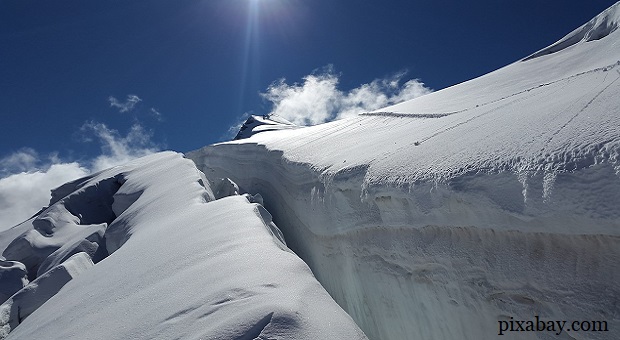

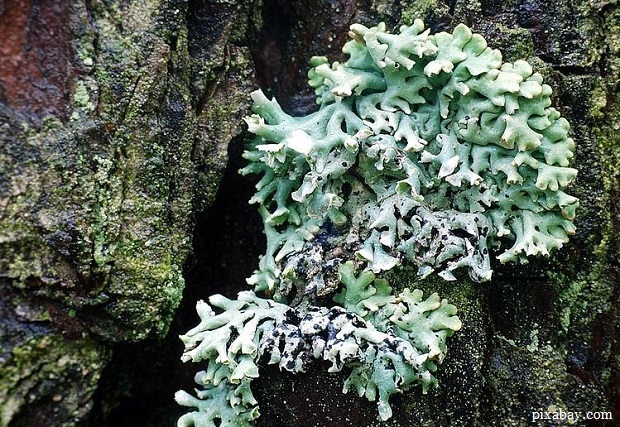


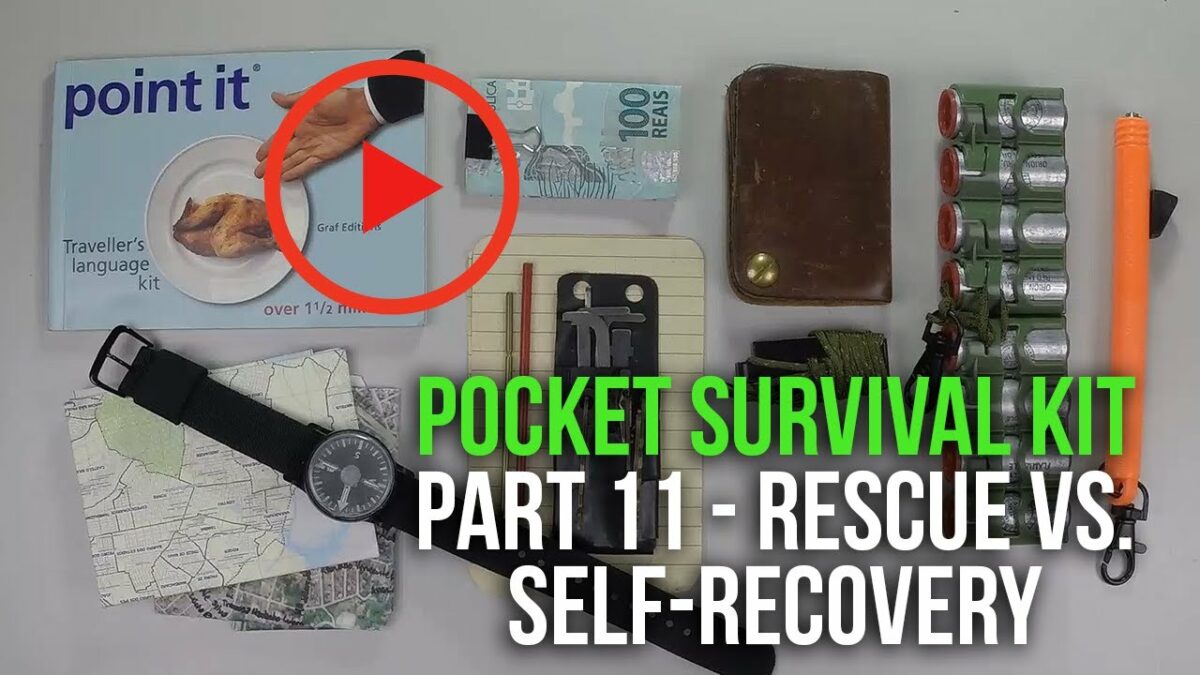
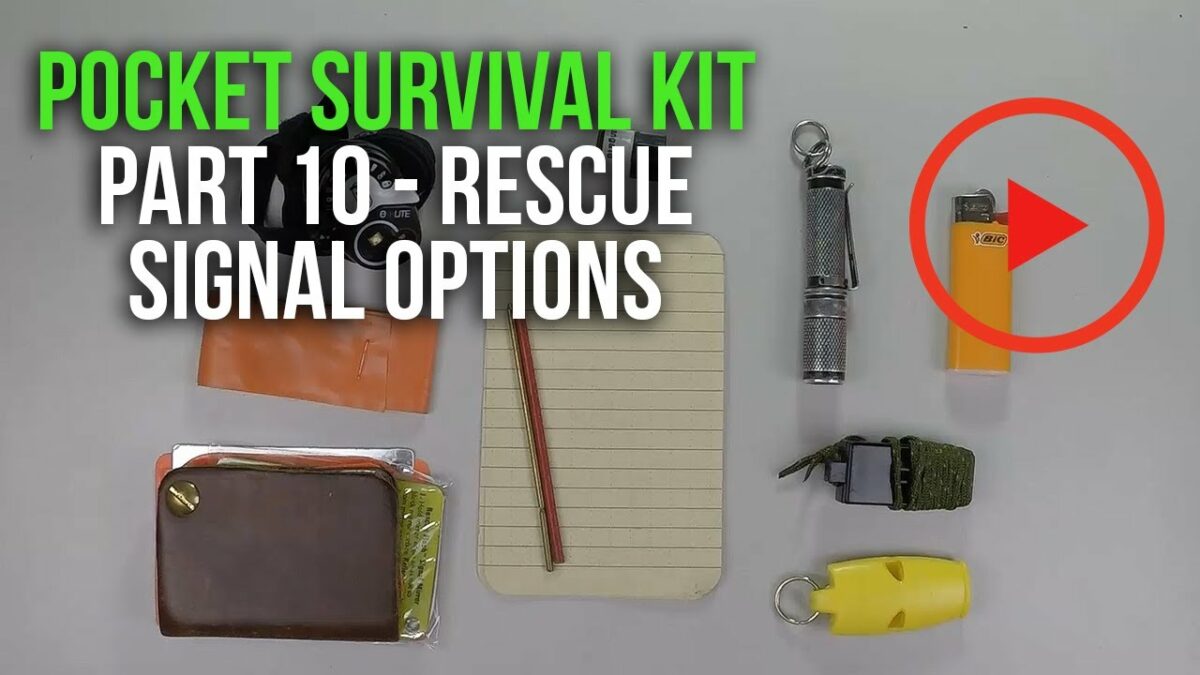
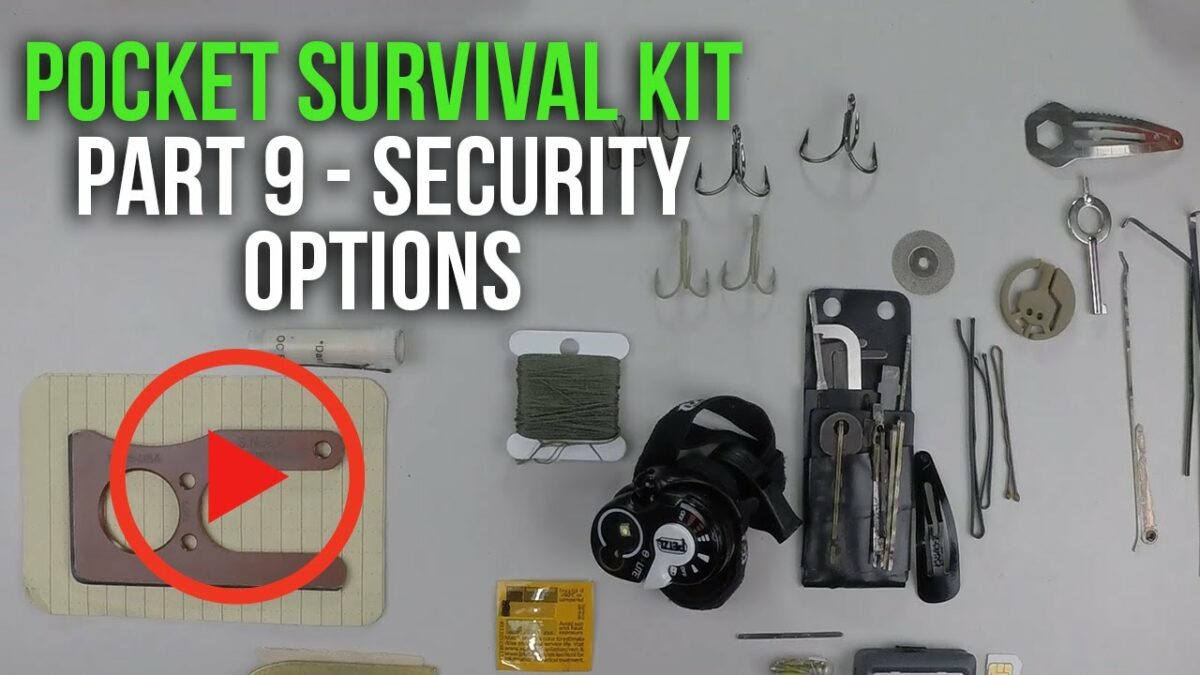


CCTer | December 21, 2017
|
Good Article. This has a lot of the info I learned in the military and I’m sure will be very useful for people who live in mountainous states or have bug out plans for the mountains.
Bill in Idaho | December 21, 2017
|
Familiar Stuff. I was a “Back-Country”/ Mountain Pilot Until Age 72 – Could Not pass Physical. My Aircraft ALWAYS Contained H/A Survival Necessities – Portable Shelter, F/Dry Food, Extra Clothing, Space Blankets (Lots), and Portable Cook-stoves plus Fuel. I also had a Case of Trauma Equip., Esp. for Frostbite and HypoThermia. I would Never, Ever Take Anyone who Smoked Above 8500 Density Altitude. Ask Any Certified “Mountain Pilot” about any of that – He’ll tell you.
What is CBD? | July 15, 2021
|
Good Afternoon everyone ! can anyone recommend where I can purchase Kats Naturals CBD Tincture Restore 250mg 1500mg?